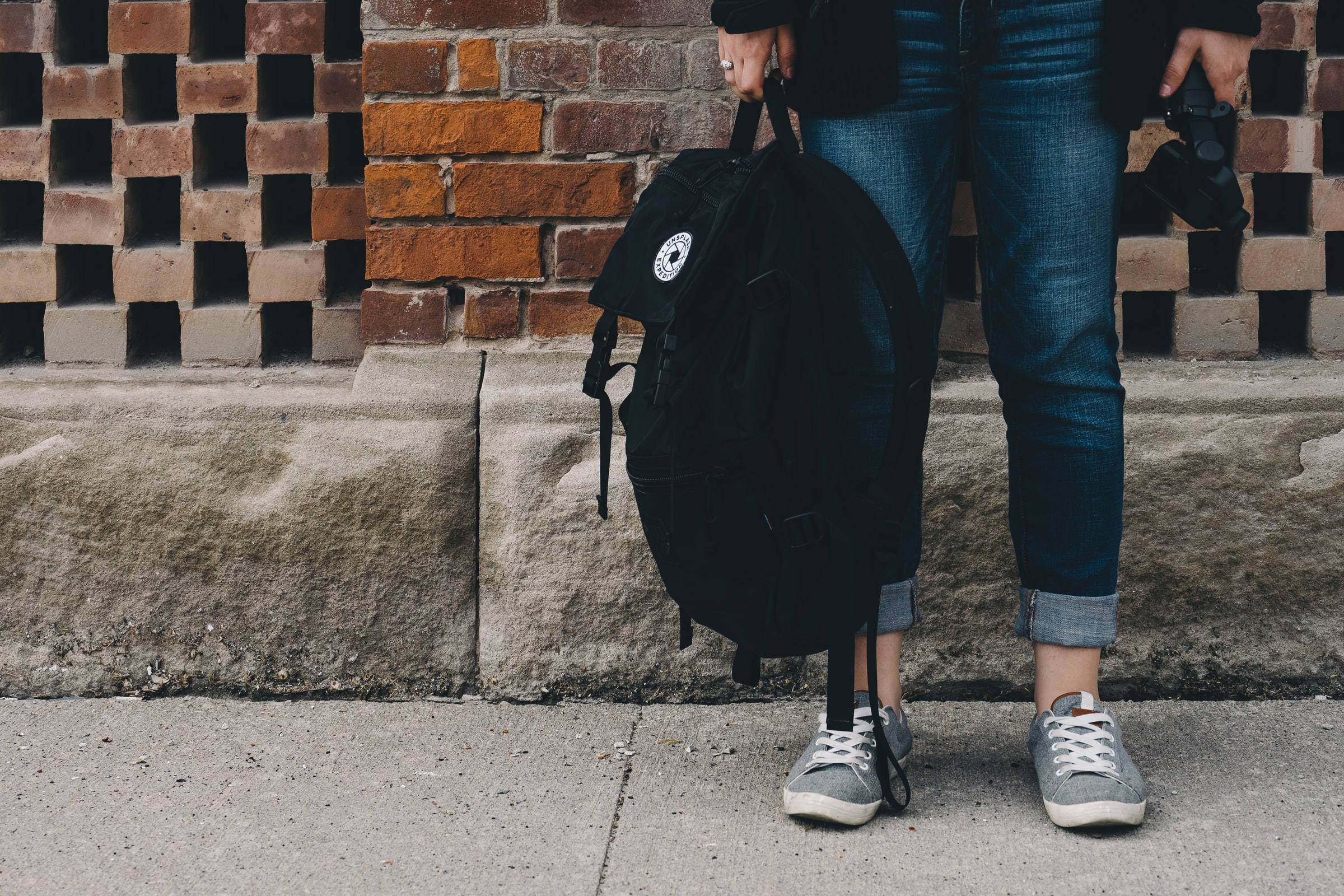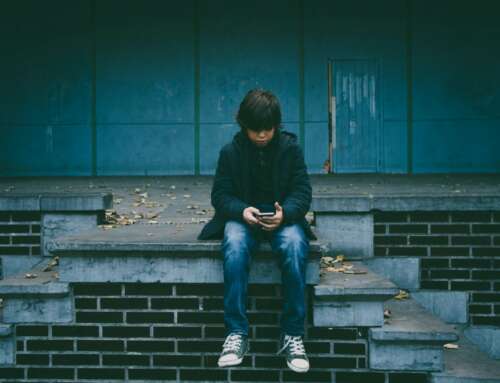Australia is gradually emerging from an unprecedented lockdown, where we continue to face major threats to our health and economy.
Schools have acted as shock absorbers during this period, switching in a short period of time to online learning, and supporting children and their families to learn from home while simultaneously attempting to remotely manage the health and wellbeing of their pupils.
It was a heroic effort but, like all these things, it comes at a cost. What this period showed is that the role of schools is crucial in helping the young people in their care not only to flourish academically, but socially – to build socially cohesive and connected school communities as part of growing healthy young citizens of tomorrow.
But when the all-important but too-often-taken-for-granted face-to-face interactions with schools were removed, yawning gaps in our society were exposed. These included: inequitable access to digital resources; children going hungry because access to breakfast and lunch programs were removed; greater levels of family violence as families were thrown together for much longer periods of time without the normal supports; and intensification of mental illness among children and their caregivers.
When the all-important but too-often-taken-for-granted face-to-face interactions with schools were removed, yawing gaps in our society were exposed.
But being frontline workers and shock absorbers – for the ills and strengths of our society – is not new for schools and their leaders. What is new is the intensification of the demands on public schools in particular – to be educators, social workers, equity advocates, mental health supporters, and community bridge-builders.
This is a crucial part of the realpolitik of education in our contemporary society that is often ignored by governments, but which COVID-19 has exposed.
Our recent survey of Victorian public school leaders, supported by RE Ross Trust and Reichstein Foundation, was undertaken during this period of unprecedented stress in Australian society.
The survey sought to identify what school leaders saw as the key social issues impacting their schools, and how they were managing to deal with these issues. What were the key resources and supports that helped them to do this important work? And what are the gaps? What is needed to support them so they can continue to help our children grow and flourish?
This is what we found out.
What are the key social issues impacting Victorian public schools?
Students and the community
School leaders noted that a range of social issues were currently facing Victorian schools, and facing their school. Issues included family violence, social isolation, mental health, and the impact of social media. Here’s a selection of what leaders said:
“Increasing number of students with anxiety and lack of resilience, social/emotional problems. Students unable to deal with conflict and disappointment. Social media is an issue for students as well.”
“Dysfunctional families, domestic violence, drug and alcohol abuse.”
Cyberbullying represented the top social issue negatively affecting the student community (60% of principals and assistant principals ranked this issue within their top three). Racism, mental health and poverty were the next cluster of key issues.

Victorian school leaders are most concerned about students exposed to family violence (69%); affected by mental ill health (66%); and experiencing poverty (53%) in terms of building social cohesion at their school.
Also, 47% of school leaders report that the proportion of students at their school requiring intervention due to mental ill health has significantly increased over the past five years, while 23% report that exposure to family violence has significantly increased.

Overall attitudes and perceptions about social cohesion
The majority of leaders agree that encouraging social cohesion is an important part of their role (83%), and 65% feel their school is very socially cohesive. While most feel well-prepared, one in five disagree that training/professional development is accessible to staff to help them deal with discrimination/harassment within the student body.
Some of the reasons school leaders feel limited in what they can do to improve social cohesion in their school, or in forming ties with their local community, include: because their focus is elsewhere; challenges engaging with parents; and distance.
This is some of what they had to say:
“Simply because that isn’t a focus at our school. It’s all about the results.”
“Tyranny of distance for our school community. Bus travel up to one-and-a-half hours for some students. Rural versus town etc.”
“In the online bullying space, parents often become involved, and thus intensify and prolong conflict between students. Not only that, social media has diminished the standing of schools as an institution in our society, so our authority to take action to address social ills is often challenged and undermined …”
The news isn’t all bad
However, the news wasn’t all bleak. School leaders noted that strong connections with parents, and school and community events and partnerships, were some of the things that help generate social cohesion within their school.
One school leader summed up many of the sentiments:
“Open communication involving parents at the school in a meaningful way. Responding to issues and concerns in a timely manner and empowering students to find their voice.”
School leaders were also very positive about their student community. For example, 92% agree that students are willing to help each other out, 84% agree that students from different backgrounds get on well together, and 78% agree that students from different backgrounds improve the school by bringing new ideas and cultures.
And in further good news, school leaders reported that over the past five years, students had become more likely to be accepting of those perceived to be different to them (67%), more likely to help each other out (65%), and more likely to get on well together (59%).
Revealing the key role of schools in building students’ sense of social belonging and connectedness, leaders perceived that students from different national and ethnic backgrounds had a strong sense of belonging with the school (82%). However, they perceived this connection decreasing as the circle widened; 64% of leaders thought students had a strong sense of belonging with the community, and 48% a strong sense of belonging with Australia.

One school leader’s comments revealed the sense of frustration many expressed about the demands upon schools and their leaders:
“The need for schools to be the educator, caregiver and guide for the whole community – schools seen as the panacea for any social issue – the huge focus at a departmental level on academic outcomes when clearly schools are required to be so much more than this. and as such pressures on schools to do more than what they have ever been designed to be.”
In terms of rural schools, another leader observed:
“Our small rural community has been affected by fires, floods, a youth suicide of which we have struggled with mental health. This includes students, staff, families, and businesses. The department has been phenomenal in consistently trying to deliver support but our rural location creates high complexities. With the isolation regulations, the mental health risks are alarming.”
And finally, one school leader summed up the frustration and anger at the widening gap between rich and poor, exacerbated by inequities in school funding:
“[I’ve got] feelings of disengagement, hopelessness and at times anger against the disenfranchising inertia of society’s power structures. Every social issue I can think of for our school stems from the widening gap in incomes and its associated beliefs of superiority and inferiority.”
Where to from here?
So what are we to make of these results? There’s a lot to be concerned about. Australian students and their families are suffering from higher rates of cyberbullying, poverty and discrimination, and inequitable allocations of funding and resources to support them growing and flourishing to their greatest potential.
If true, this is a waste of the skills and talents of our upcoming generations.
On a positive note, we see reported improvements in students being willing to help one another out, feeling safe when they came to school, and being more accepting of those perceived to be different from them.
Australians have long held dear to cultural traditions of a “fair go for all” and a warm and welcoming community, particularly for those from diverse ethnic backgrounds. These findings suggest both the truth of some of these perceptions, and the fallacies.
For how long will we continue to make public schools and their leaders responsible for the failings of our society? Our failure to ensure that the benefits of our wealthy society are equitably distributed, a public mantra that less taxes means more money in certain people’s pockets, while running down our essential services; the most highly inequitable funding model for schools in the OECD?
These are things we can do something about – but are we willing to do so? And if not, it will be the children and schools that will continue to bear the consequences of our decisions to look the other way.
COVID-19 has provided us with a rich opportunity to work differently, to make different and much fairer choices. Let us seize the moment. It is what we owe our next generation.
This article was co-authored by Professor Amanda Keddie, who leads the program Children, Young People and their Communities within the REDI (Research for Educational Impact) Centre at Deakin University.
This article was first published on Monash Lens. Read the original article








Leave A Comment